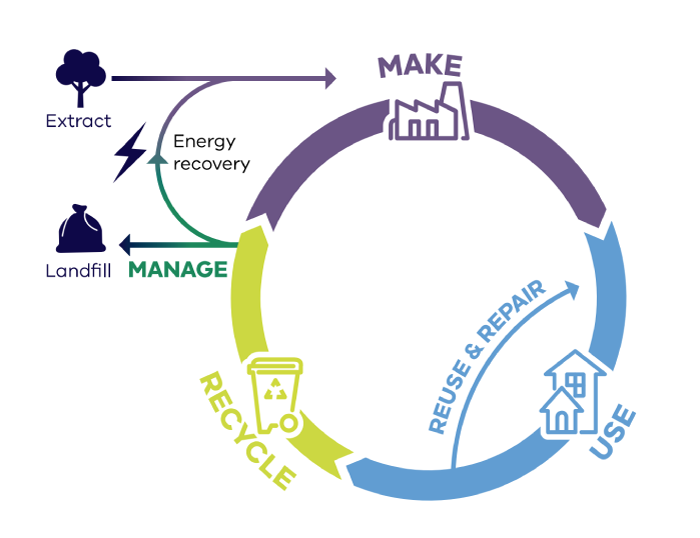Reduce, reuse, recycle
As a large consuming institution, the University is dedicated to influencing and supporting our community to reduce our collective waste.
The University has a target to reduce waste to landfill to 10kg per person by end of 2025, as outlined in the Sustainability Plan 2030. We are working towards this through reducing consumption at the source and putting systems in place to reuse and recycle the materials we do need.

Closing the loop
The University’s approach to waste management is modelled on the circular economy, meaning that we ‘close the loop’ on materials we produce by feeding them back into the material cycle. We are actively working towards this through waste education initiatives, improving waste collection streams, providing reuse options and rethinking procurement.
What is the circular economy?
The circular economy is an economic model where we use products for as long as possible and then recover and regenerate materials at the end of their life.
In a traditional linear economy, products are made, used and then disposed, ending up in landfill or the natural environment. As the earth’s resources are shrinking, and our population growing, we recognise the global need to reduce our rates of consumption. This is why we are moving towards the circular economy model.

The University aspires to phase out single-use items over the coming years in favour of materials and resources that can be reused, repurposed or recycled. To find out about how we are using our campuses as ‘living laboratories’ to study material usage in universities, read the Pursuit article.
Rethinking our consumption
Rethink, refuse, repair, repurpose… there are many ways to frame a new way of thinking about how we consume and produce waste. Often referred to as ‘the waste hierarchy’, or ‘the five Rs’, we have simplified these into three main areas: reduce, reuse, recycle.
Auditing our waste
The University conducts regular waste audits to better understand how we can enhance our waste collection streams. Read the key findings of our latest waste audit to understand more about types of waste produced at the University.


